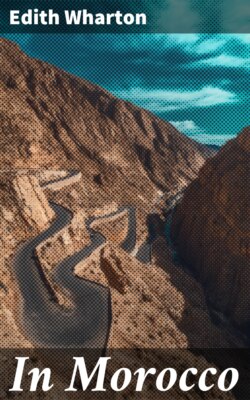Читать книгу In Morocco - Edith Wharton - Страница 5
На сайте Литреса книга снята с продажи.
II
ОглавлениеAuthoritative utterances on Morocco are not wanting for those who can read them in French; but they are to be found mainly in large and often inaccessible books, like M. Doutté's "En Tribu," the Marquis de Segonzac's remarkable explorations in the Atlas, or Foucauld's classic (but unobtainable) "Reconnaissance au Maroc"; and few, if any, have been translated into English.
M. Louis Châtelain has dealt with the Roman ruins of Volubilis and M. Tranchant de Lunel, M. Raymond Koechlin, M. Gaillard, M. Ricard, and many other French scholars, have written of Moslem architecture and art in articles published either in "France-Maroc," as introductions to catalogues of exhibitions, or in the reviews and daily papers. Pierre Loti and M. André Chevrillon have reflected, with the intensest visual sensibility, the romantic and ruinous Morocco of yesterday; and in the volumes of the "Conférences Marocaines," published by the French government, the experts gathered about the Resident-General have examined the industrial and agricultural Morocco of to-morrow. Lastly, one striking book sums up, with the clearness and consecutiveness of which French scholarship alone possesses the art, the chief things to be said on all these subjects, save that of art and archæology. This is M. Augustin Bernard's volume, "Le Maroc," the one portable and compact yet full and informing book since Leo Africanus described the bazaars of Fez. But M. Augustin Bernard deals only with the ethnology, the social, religious and political history, and the physical properties, of the country; and this, though "a large order," leaves out the visual and picturesque side, except in so far as the book touches on the always picturesque life of the people.
For the use, therefore, of the happy wanderers who may be planning a Moroccan journey, I have added to the record of my personal impressions a slight sketch of the history and art of the country. In extenuation of the attempt I must add that the chief merit of this sketch will be its absence of originality. Its facts will be chiefly drawn from the pages of M. Augustin Bernard, M. H. Saladin, and M. Gaston Migeon, and the rich sources of the "Conférences Marocaines" and the articles of "France-Maroc." It will also be deeply indebted to information given on the spot by the brilliant specialists of the French administration, to the Marquis de Segonzac, with whom I had the good luck to travel from Rabat to Marrakech and back; to M. Alfred de Tarde, editor of "France-Maroc"; to M. Tranchant de Lunel, director of the French School of Fine Arts in Morocco; to M. Goulven, the historian of Portuguese Mazagan; to M. Louis Châtelain, and to the many other cultivated and cordial French officials, military and civilian, who, at each stage of my journey, did their amiable best to answer my questions and open my eyes.
